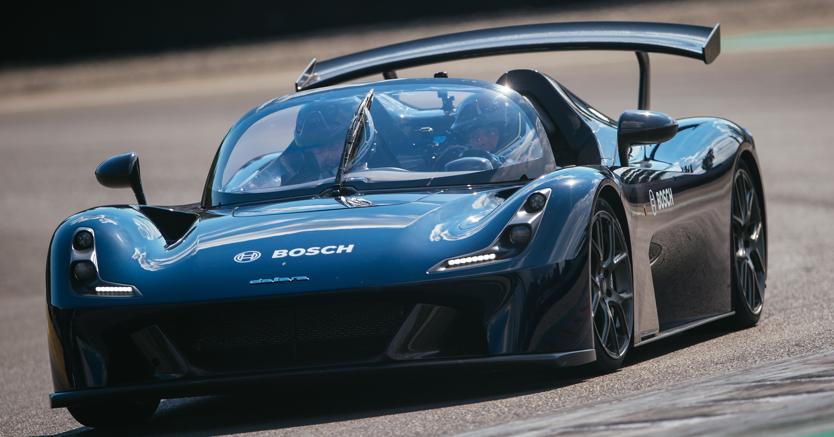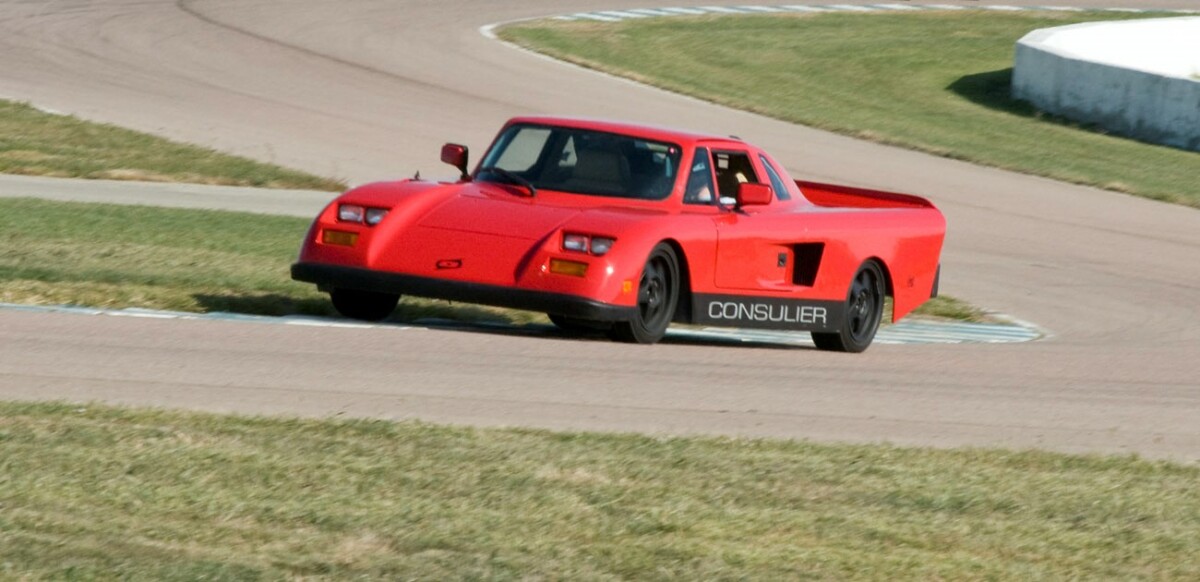The allure of the path not taken is strong within me. This pull manifests itself in a number of different ways including the love of mechanical watches, an antiquated product that is more expensive, fragile, and less accurate than quartz. It’s a primal instinct, completely separated from any rational thought.
Nothing sums up my love of automotive oddities like my ownership of a 1989 Consulier GTP, a car noted for three things:
- Extraordinary performance
- Advanced composites, a first for that time period
- Limited aesthetic appeal
Two out of three are great with the last one being subjective. I think it looks like a March 84G IMSA car in my garage, but everyone has their opinion.
The Consulier is a car started by an entrepreneur who had a better idea, specifically a lightweight car utilizing advanced materials that the true grassroots (SCCA) racer could own, maintain and enjoy. With about 100 cars produced and success on the racetrack that saw it banned from every race series it entered for showing up the likes of Porsche and Corvette, the Consulier faded into near-obscurity. I remember it as the development was all around me as I was growing up. Prototypes were designed and constructed not far from my family home, and most of the development was done by close friends.
The Consulier is only one example of a never-ending appetite to learn about what most others forgot. I long for a Piper GTT, and joined the Unipower GT group on Facebook. I’m in love with my close friend’s Landar, and always had a thing for Devin’s and the other 1950’s road race specials. Who can forget Peter Brock’s super cool Hino Samurai?
The appeal of these oddities seems to be wrapped up in the story. Usually it’s a larger than life figure who takes the risk to prove they have a better idea. It’s Thomas Edison, but with wheels.
History has a number of these characters. Recently I saw one of Max Balchowsky’s Old Yellers, a car that took the fight to Ferrari and yet was pieced together from junkyards. Some were more successful than others including Jim Hall, Lance Reventlow (with help from Troutman and Barnes), and even Briggs Cunningham.
Barriers to entry in the automotive world are certainly more significant than they were. There’s no ads for Devin bodies in the back of magazines and it’s terribly difficult to weld up a unibody chassis on your garage floor. Let’s not even get into the cost of crash testing, complexity of FIA homologation, or even just turn signal compliance cross 100 different countries. The resources needed today are far more substantial.
That’s why I am surprised and pleased by the number of small manufacturers that are still out there and still debuting cars. There are even several substantial nameplates that were once on life support, but are now launching brilliant machines. I still remember the questionable Aston Martin press release that cheered its first profitable year in its 90+ year history.
Aside from the stunning DeTomaso P72 covered in another update, I am most intrigued by the Dallara Stradale. In some ways, it’s a modern Consulier. It’s highly track focused, uses cutting edge materials, raises the bar for advanced aerodynamics, and from some angles it looks a little unusual.

Dallara is a well-established race car manufacturer and street car subcontractor, and has its fingerprints on some of the most iconic cars in history. Dallara was the engineering force behind the Lamborghini Miura and Lancia Stratos, as well as the manufacturer of the beautiful Lancia LC2. Today, Dallara designs and builds the Haas F1 car, is the sole car supplier to IndyCar, and builds most formula cars around the world.
The Stradale is a 175mph supercar who’s weight is so low, they it only needs the power from a 2.3L Ford Ecoboost engine. Similarities to the 1900 pound Consulier’s Dodge turbo 4 cylinder are hard not to see.
I like this philosophy. Small, lightweight cars with simple mechanicals, and a good parts supply are very hard to find. They are uniquely fun to drive and reliable. Sure, the $250,000 Dallara is not within everyone’s reach, but it’s out there proving once again there is demand for the unusual.
